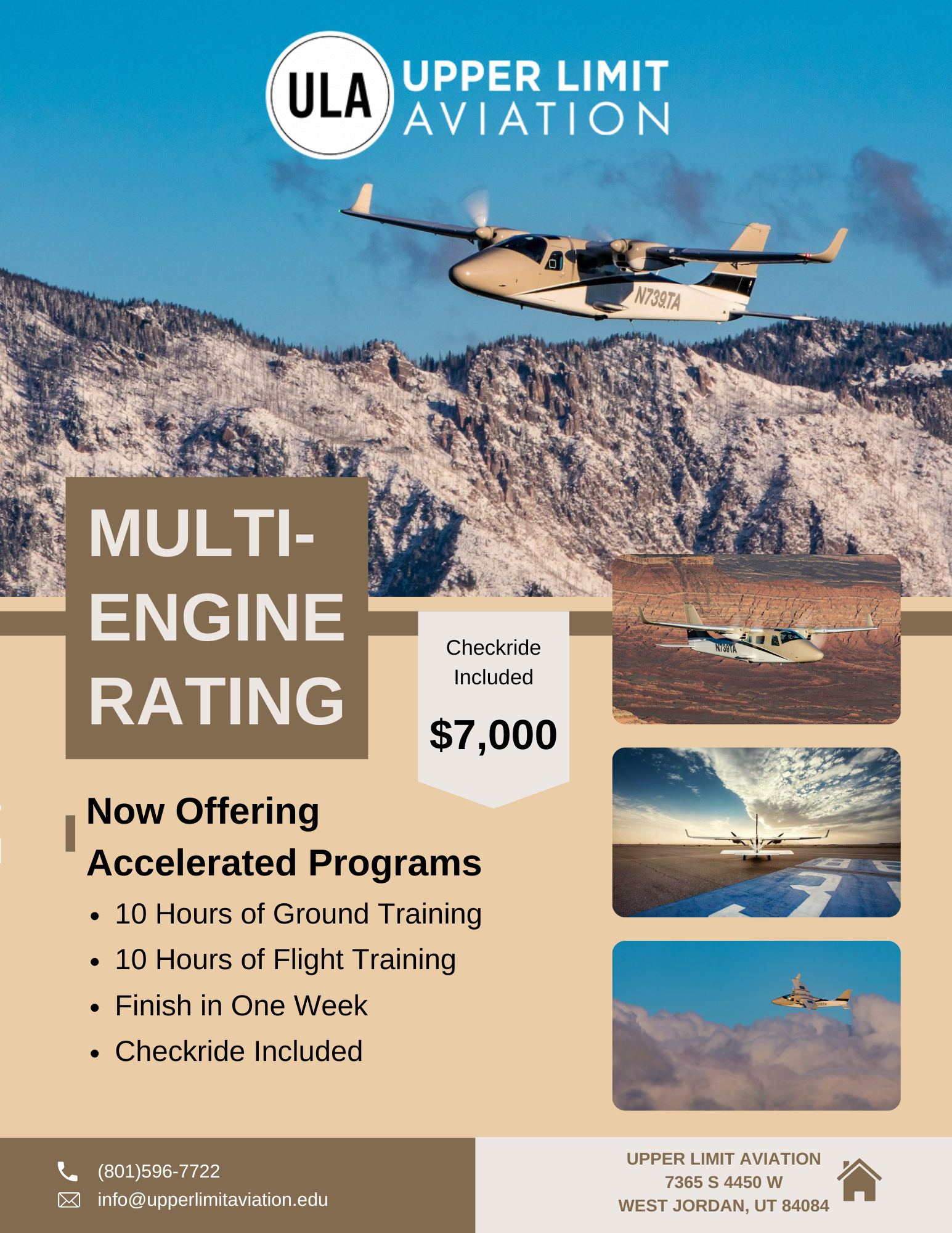Finding the Humor in Flying With the Airlines
Flying with the airlines isn’t generally funny business, but that’s not stopping Kulula from trying to put a smile on your face. Humor isn’t always the first thing you think of when it comes to flying with the airlines, especially if you’re currently studying for your commercial at Upper Limit Aviation. It takes a lot […]
I Was a New Private Pilot, Flying Small Aircraft In Busy Airspace
The Night I Flew a “Heavy” … Make that a “Cessna Heavy” Shawn Arena This article is similar in nature to the previous flight experiences that I have documented for you. As a newly minted private pilot, this experience taught me how to successfully navigate the fast-paced ground and air portions of flying small aircraft into one […]
When Did You Know You Wanted To Be a Pilot?
My personal aviation lineage and the first time I knew I wanted to be a pilot trace back to my grandfather. Shawn Arena Those of us who have been fortunate to have received the gift of flight or just the enjoyment of aviation can usually trace back to where that flame to be a pilot was first […]
The Most Effective Diet For Pilots
Amber Berlin Every year at Thanksgiving we gather around the table and consume massive amounts of turkey. Then we spend the afternoon napping on the couch in a turkey coma. We know from experience that turkey is a food that promotes a state of sleepiness, and we also know that you wouldn’t want to eat […]
Do Drones Pose a Threat to Pilots and Aircraft?
Dr. Mary Ann O’Grady The allowance of widespread drone ownership and operation in the United States through the clearance of approximately 60 organizations by the Federal Aviation Administration (FAA) has raised the level of concern for military, commercial, and private pilots alike. As concerns escalated, there were plans to construct six test ranges for these […]
Exploring Avgas Alternatives For General Aviation
Amber Berlin For Part 1 of this discussion, click here. The health hazards, loss of IQ points, and associated costs of lead (Pb) fuel emissions leaves only one option for the General Aviation (GA) fleet: stop using leaded fuel. In order to accomplish this task, GA has several options to consider, including Avgas alternatives such […]
Why General Aviation Needs To Stop Using Leaded Avgas
Amber Berlin The Clean Air Act, last amended in 1990, established a higher standard of environmental responsibility in the United States. In order to meet this standard, several initiatives were undertaken to reduce air emissions deemed harmful to human health. One such initiative was a close examination of the hazards presented by lead (Pb) fuel […]
Flight To the Past: The George Patton Memorial Museum
Shawn Arena March 1942. Three months following the Pearl Harbor attack which thrust the United States into World War II, (and one month before the daring Doolittle Raid on Tokyo), the War Department ordered the commander of the Army First Corps General George S. Patton to locate, establish, and command a desert training area to […]
Why a Pre-Flight Discussion With Passengers Is Important
Don’t forget to take the Dramamine before you fly… not after. Shawn Arena This article highlights the importance of a dialogue with your first time and even seasoned passengers before flying, a sort of pre-flight discussion. You should be prepared to inform them of all aspects of the upcoming flight, and don’t forget to ask […]
How My Student Taught Me A Density Altitude Lesson
Shawn Arena Welcome back! This is another installment of my personal flying experiences that hopefully others can learn from as well. The twist to this true tale, however, originates from a former student of mine who reminded me of the pitfalls and potential dangers of density altitude operations. The Prelude September 20, 2000, was a […]
How My Aviation Knowledge Helped Air Force One
Honor, Duty, Country … and Flying? Shawn Arena Hello again! Hopefully, my prior adventures have been interesting and informational for all readers; this one, however, while not describing any daring or skillful airmanship on my part (ok, my opinion), it does provide one of the most unique experiences I have ever been part of … […]
Guidelines for Buying an Airplane
Dr. Mary Ann O’Grady So what comes first: the pilot’s license or buying an airplane? At first glance, this question seems to elicit a fairly straightforward response that an individual would not be buying an airplane if he or she was not planning on flying it personally. However, business entities, organizations, associations, and even individuals […]

